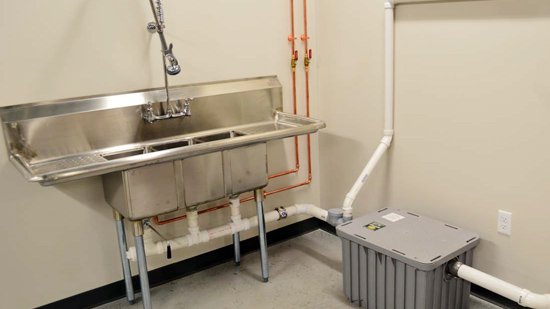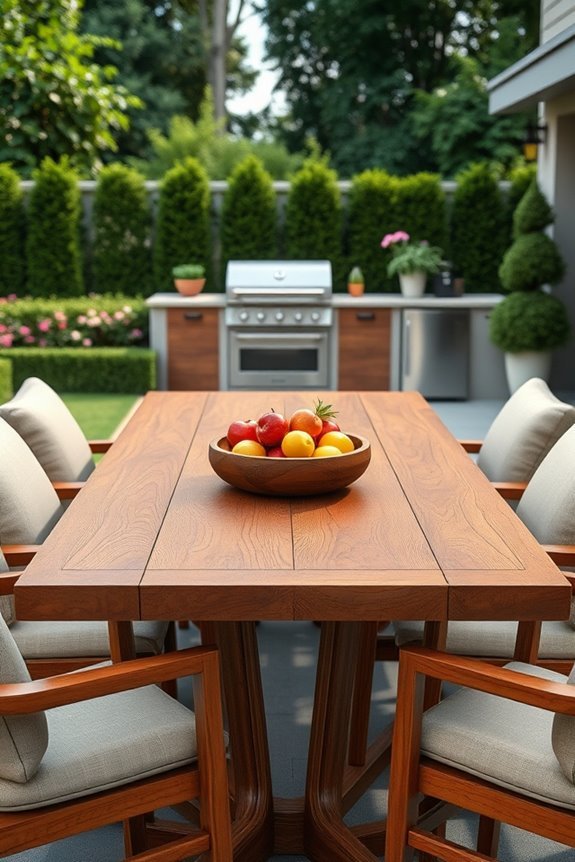How to Plumb a Grease Trap?
Are you struggling to figure out how to plumb a grease trap? We will walk you through the step-by-step process of properly plumbing your grease trap. Whether you’re a DIY enthusiast or a professional plumber, these instructions will help you complete the job with ease.
Plumbing a grease trap is not as daunting as it may seem. By following the correct procedures, you can ensure the efficient flow of wastewater while preventing any potential clogs or backups. From gathering the necessary tools and materials to identifying the right location for your grease trap, we’ve got you covered.
We will provide you with expert tips and tricks that will save you time and money. We’ll discuss common mistakes to avoid and highlight the importance of regular maintenance for the longevity and functionality of your grease trap system.

Photo by lehner-belkaied.de
Installing a Grease Trap
Installing a grease trap is crucial for any establishment that handles cooking or food preparation. Grease traps, also known as grease interceptors, are designed to prevent fats, oils, and grease (FOG) from entering the municipal sewer system. When FOG enters the sewer system, it can cause blockages and backups, leading to costly repairs and potential fines.
A properly installed and maintained grease trap ensures that FOG is captured and contained before it can cause any harm. By intercepting FOG, grease traps play a vital role in protecting the environment and promoting sustainable wastewater management practices.
Types of Grease Traps
Before you start plumbing your grease trap, it’s important to understand the different types available. The type of grease trap you choose will depend on factors such as the size of your establishment, the volume of wastewater generated, and local regulations.
Hydro-mechanical grease traps
These grease traps use a combination of mechanical and hydrodynamic principles to separate FOG from wastewater. They are typically smaller in size and are suitable for residential or small-scale commercial applications.
Gravity grease traps
Gravity grease traps rely on the difference in density between water and FOG to separate them. They are larger in size and are commonly used in larger commercial kitchens and food processing facilities.
Automatic grease recovery units
These advanced grease traps use mechanical means, such as skimmers or scrapers, to remove FOG automatically. They are highly efficient and are often used in high-volume commercial kitchens.
It’s important to consult local regulations and guidelines to determine the appropriate type and size of grease trap for your specific needs.
Here’s another post you might find useful: What are Grease Traps & How Do They Work?
Tools and Materials Needed for Plumbing a Grease Trap
Before you begin plumbing your grease trap, gather the necessary tools and materials to ensure a smooth installation process. Here are some items you’ll need:
PVC pipes
PVC pipes are commonly used for plumbing grease traps due to their durability and resistance to chemicals. Select the appropriate size and length of pipes based on the layout of your plumbing system.
Pipe fittings
Pipe fittings, such as elbows, tees, and couplings, are essential for connecting the various components of your grease trap system. Make sure to choose fittings that are compatible with your chosen pipe material.
Trap seal primer
A trap seal primer is used to maintain the water seal in the trap, preventing foul odors from escaping into the establishment. Check local plumbing codes to determine if a trap seal primer is required in your area.
Wrenches
Adjustable wrenches are necessary for tightening and loosening nuts and bolts during the installation process. Make sure to have different sizes of wrenches on hand to accommodate various fittings.
Teflon tape
Teflon tape is used to create a watertight seal between threaded connections. Wrap the tape around the male threads before attaching the fittings to prevent leaks.
Level
A level is essential for ensuring that your grease trap is installed in a perfectly horizontal position. This is important for the proper functioning of the trap and preventing any potential issues.
By having these tools and materials ready, you’ll be well-prepared to tackle the installation of your grease trap.
You might also be interested in: Element that Makes Plumbing Pipes
Step-by-Step Guide on How to Plumb a Grease Trap
Now that you have the necessary tools and materials, let’s dive into the step-by-step process of plumbing a grease trap. Follow these instructions carefully to ensure a successful installation:
Choose the location
Select a suitable location for your grease trap. It should be easily accessible for maintenance and cleaning. Consider the proximity to your kitchen or food preparation area for efficient wastewater flow.
Excavate the area
Dig a hole in the ground where the grease trap will be installed. Make sure the dimensions of the hole are appropriate for the size of your grease trap.
Prepare the trap
Install the inlet and outlet pipes, as well as any necessary fittings, onto the grease trap. Use Teflon tape to create a watertight seal between the threaded connections.
Lower the trap
Carefully lower the grease trap into the hole, ensuring that it is level. Use a level to check and adjust if necessary. Secure the trap in place using concrete or other suitable materials.
Connect the sewer lines
Connect the sewer lines from your establishment to the inlet and outlet pipes of the grease trap. Use PVC pipes and fittings to create a secure and watertight connection.
Test the system
Once the connections are made, test the system by running water through it. Check for any leaks or drainage issues. Make any necessary adjustments or repairs before proceeding.
Backfill the hole
Once the system is tested and confirmed to be working properly, backfill the hole around the grease trap. Compact the soil as you go to ensure stability.
Install the trap seal primer
If required by local regulations, install a trap seal primer to maintain the water seal in the trap. Follow the manufacturer’s instructions for proper installation.
By following these steps, you’ll be able to successfully plumb your grease trap and ensure the efficient flow of wastewater in your establishment.
You might also be interested in: How to Get Rid of Damp Smell After Carpet Cleaning? Expert
Common Mistakes to Avoid When Plumbing a Grease Trap
While plumbing a grease trap may seem straightforward, there are some common mistakes that can lead to issues down the line. By being aware of these mistakes, you can avoid costly repairs and ensure the longevity of your grease trap system. Here are a few mistakes to watch out for:
Incorrect sizing
Choosing a grease trap that is too small for your establishment’s needs can lead to frequent clogs and backups. Conversely, selecting a grease trap that is too large may result in inefficient operation. Consult with a professional to determine the appropriate size for your specific requirements.
Improper installation
Failing to level the grease trap during installation can lead to drainage issues and potential damage to the system. Take the time to ensure that the trap is installed correctly and securely.
Neglecting regular maintenance
Regular maintenance is essential for the proper functioning of a grease trap. Failing to clean the trap regularly can result in foul odors, slow drainage, and reduced efficiency. Develop a maintenance schedule and stick to it to avoid unnecessary complications.
Ignoring local regulations
Different regions have specific regulations regarding the installation and maintenance of grease traps. Make sure to familiarize yourself with these regulations and comply with them to avoid penalties or fines.
By being mindful of these common mistakes, you can ensure that your grease trap operates smoothly and effectively.
Don’t miss out on related tips: Read this next: What Are Water Treatment Plants?
Maintenance and Cleaning of Grease Traps
Regular maintenance and cleaning are crucial for the optimal functionality of your grease trap. Here are some tips to keep your grease trap in excellent condition:
Schedule regular inspections
Regularly inspect your grease trap for any signs of damage or excessive buildup. Catching potential issues early can save you from costly repairs later on.
Clean the trap regularly
Grease traps should be cleaned regularly to prevent FOG buildup. Hire a professional grease trap cleaning service or follow the manufacturer’s instructions for self-cleaning. Do not attempt to clean the trap yourself if you are not trained to do so.
Dispose of grease properly
Properly dispose of collected grease in designated waste containers. Do not pour grease down the drain, as it can lead to clogs and backups.
Educate staff
If you have a commercial kitchen, educate your staff on the importance of proper grease disposal and maintenance of the grease trap. Encourage them to follow best practices to prevent issues.
By implementing these maintenance tips, you can prolong the lifespan of your grease trap and ensure the efficient flow of wastewater.
There’s more to explore! Here’s another valuable read: Aqua Pro Vac Extractor Review
Benefits of Hiring a Professional for Grease Trap Plumbing
While some individuals may choose to tackle the plumbing of a grease trap themselves, there are several benefits to hiring a professional for the job:
Expertise and experience
Professional plumbers have the necessary expertise and experience to properly install and maintain a grease trap. They are familiar with local regulations and can ensure compliance.
Time and cost savings
Hiring a professional saves you time and money in the long run. They have the necessary tools and materials readily available, eliminating the need for you to purchase or rent them. They can also complete the job efficiently, minimizing any potential disruptions to your establishment.
Warranty and guarantee
Professional plumbers often provide warranties and guarantees for their work. This gives you peace of mind, knowing that any issues that arise will be promptly addressed.
Compliance with regulations
Grease traps are subject to specific regulations and guidelines. Professional plumbers are well-versed in these regulations and can ensure that your grease trap installation and maintenance meet the necessary requirements.
By hiring a professional for your grease trap plumbing needs, you can ensure a seamless and hassle-free installation process.
Here’s another post you might find useful: Are Culligan Water Systems Worth It
Frequently Asked Questions About Grease Trap Plumbing
How often should I clean my grease trap?
The frequency of cleaning will depend on the size of your grease trap and the volume of wastewater generated. As a general guideline, most grease traps should be cleaned every 1 to 3 months.
Can I install a grease trap myself?
While it is possible to install a grease trap yourself, it is recommended to hire a professional plumber. They have the necessary expertise and experience to ensure a proper installation and compliance with regulations.
What happens if I don’t install a grease trap?
Failing to install a grease trap can result in FOG entering the sewer system, leading to blockages, backups, and potential fines. It can also harm the environment by polluting water bodies.
Can I reuse the collected grease?
Depending on local regulations, collected grease may be recyclable or suitable for conversion into biofuel. Check with your local waste management authorities for proper disposal options.
Do I need a permit to install a grease trap?
Permit requirements vary depending on your location and the size of the grease trap. Contact your local building or plumbing department to determine if a permit is required.
By addressing these commonly asked questions, we hope to provide you with a better understanding of grease trap plumbing and maintenance.
Conclusion
Plumbing a grease trap may seem like a daunting task, but with the right knowledge and guidance, it can be accomplished successfully. By following the step-by-step instructions provided in this article, you can ensure the efficient flow of wastewater while preventing clogs and backups.
If you’re unsure about tackling the plumbing yourself, consider hiring a professional plumber who can ensure a seamless installation and compliance with regulations.
By taking the necessary steps to properly plumb your grease trap, you’ll not only protect the environment but also save yourself from potential headaches and costly repairs in the future. So, roll up your sleeves and get ready to take on the challenge of plumbing a grease trap with confidence!




